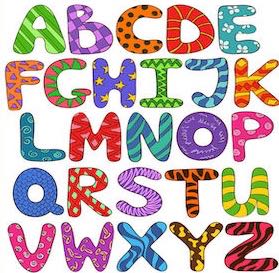By Dr. Ken Broda Bahm:

When you are working on boiling down your message, there will often be that indefinable “something” that makes you recognize when you have the right language. A good trial theme, for example, doesn’t just summarize the strength of your case. As I’ve waxed before, the right theme will be based in language that “rolls off the tongue and sticks in the memory.” And studying exactly what makes words do that could be one’s life’s work. It is not just a matter of science, but a matter of poetry as well.
Science, however, sometimes adds an interesting stanza. It turns out putting your wording into, of all things, alphabetic order, makes your message appear more truthful. Really. A faithful reader of this blog recently alerted me to this finding, coming from a study on consumer psychology. The study (King & Auschaitrukul, 2019), discussed in a recent ScienceDaily post, tested a number of mock advertising claims and found that the messages in which the wording following a natural alphabetic sequence — “Benneril Eases Pain” or “Alpen Moisturizes Skin,” rather than “Vufferil Eases Pain” or “Vaspen Moisturizes Skin” — were significantly more likely to be viewed as truthful. According to lead author, Dr. Dan King, “We go about our lives looking for natural sequences, and when we find a match to one of these patterns, it feels right.” He continues, “An embedded alphabetic sequence, even if unconsciously perceived, feels like a safe haven, and our brains can make unconscious judgments that cause-and-effect statements following this pattern are true.” For example, it makes more sense to think that “A” causes “B” than to think that “B” causes “A.” This is called the “Symbolic Sequence Effect (a name which, I must note, violates its own principle). In this post, I’ll take a look at what it might mean for themes and other messages.
To me, it is remarkable that even without awareness, we perceive messages to be more truthful when the words follow an alphabetical order. Now, I am not suggesting that litigators should start alphabetizing all the words in all their themes or openings. After all, even if it is 100 percent legit, the Symbolic Sequence Effect would be one of many effective messaging devices, and others — repetition, metaphor, the rule of 3’s — could well make the alphabetically random message the more effective one. Instead, I’m saying that the research provides a reminder to appreciate the cognitive complexity in the way we receive language, and to appreciate the brain’s search for familiar patterns.
But looking at this surprising result, I was inspired to play it out a bit. Suspecting that it applies to the key words more than the connecting words that the brain tends to skim over, here are a few messages that come to mind in a few different areas of litigation.
Patent:
Innovation Needs Protection
Commercial:
Agreements and Contracts Depend on Honesty
Toxic Remediation:
The Cure Multiplies the Problem
Medical Liability:
If it’s Untested, it’s Untreated
Employment Injury:
A Basic Promise of a Safe Workplace
You might have noticed that the title of this post follows the principle as well. I will sometimes look at the number of views for different posts, so Let’s See if it Works.
_____
Other Posts on Theme:
- Find the Music in Your Theme
- Say It in Three Minutes
- Deploy Your Trial Message When It Matters Most: Pretrial
King, D., & Auschaitrakul, S. (2019). Symbolic Sequence Effects on Consumers’ Judgments of Truth for Brand Claims. Journal of Consumer Psychology. DOI: 10.1002/jcpy.1132